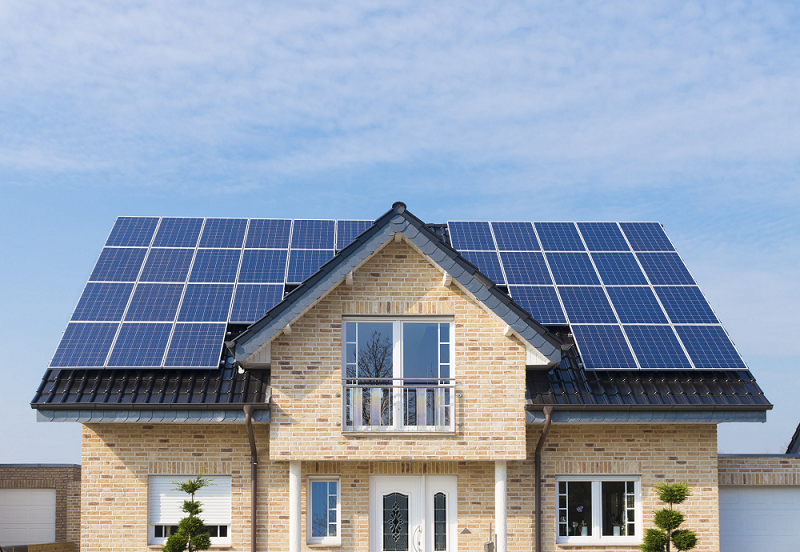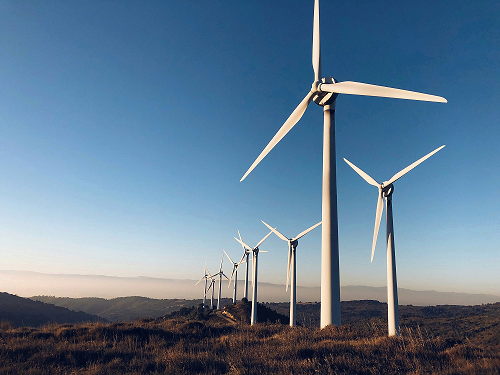The Empire State Building is now 100% powered by Wind - read the headline this past February. And I wondered how did they do that?
I was sure that if they had put a giant wind generator on top of the Empire State Building, I would have noticed. Or even if they had put a series of big wind generators off the Long Island coast, I would have at least seen a photo or two of them. A few weeks back, I wrote about a significant wind farm that was about to be constructed 15 miles off the New Jersey coast, but it was just getting its approvals, never mind powering a major office building. So I decided to explore what lay behind this impressive headline.
I found press releases and stories explaining that the Empire State Realty Trust, Inc, (NYSE: ESRT) which owns the iconic 102-story Empire State building and 13 other office buildings, had just signed a three-year contract with Green Mountain Energy and Direct Energy to power its entire real estate portfolio located in New York, and Connecticut with renewable wind energy. The signing of this contract made ESRT the nation’s largest user of renewable energy in the real estate industry. More than a decade ago, the Empire State Building had gone through a major energy and efficiency upgrading in the process of its restoration, which had resulted in a 40% reduction in energy use and emissions. It is pretty hard to find any fault with those statistics and with the sustainability objectives of ESRT.
But who are Green Mountain Energy and Direct Energy? Where are they located? And how does the renewable electricity they generate find its way to the Empire State building and its corporate brothers? Let’s take a look.
Green Mountain Energy
Green Mountain Energy, founded in Vermont in 1997, is currently headquartered in Houston, TX. Their website states, “As the longest-serving renewable energy retailer, we’re proud to bring you 100% clean energy solutions backed by the purchase of Renewable Energy Certificates (RECs) for homes, small businesses, and anyone else looking to get involved with sustainability efforts.”

Green Mountain will sell you a home solar energy system. Or, they can offer to sell you a wide variety of Carbon Offsets for carbon emissions.
Carbon Offsets are investments in activities like methane capture at landfills, reforestation, wastewater treatment facilities, or energy efficiency improvement projects. Their objective is to reduce greenhouse gases. And purchasing Carbon Offsets is one way you can demonstrate your commitment to sustainable living.
While Green Mountain appears to be genuinely concerned about the environment, they do not generate any electricity; they are energy retailers. They purchase renewable electricity from generators and “sell it” to people willing to pay for electricity with a lower impact on the environment. Green Mountain Energy was sold to NRG in 2010.
Direct Energy
The second partner in the project is Direct Energy. They define themselves as a North American retailer of energy and energy services. They were founded in 1986 in Toronto and presently have their headquarters in Houston, TX. Direct Energy is quite a bit larger than Green Mountain, with operations in all 50 states and across Canada. It appears that, like Green Mountain Energy, they do not generate any electricity either. They are just a middle man. Again, like Green Mountain Energy, Direct Energy is also owned by NRG.
Who Is NRG?
NRG is headquartered right here in Princeton, NJ. They are a very large operation with numerous wholly-owned subsidiaries. They own and operate generating companies, distribution companies, and retailers of both gas and electric services.
There is no doubt that there are significant economies of scale to be had in businesses like energy. They require millions and even billions of dollars in capital to set up and operate. A visit to its website was an eye-opener as to how a large company like NRG generates electricity. And while there were a few discrepancies from page to page, this is how their numbers break out:

That table leaves 16% of their total output "unspecified." Perhaps a good portion of this is the power they purchase rather than generate. But their website did not otherwise address it. Also, the Empire State Realty Trust must be the single largest customer of NRG's renewable electricity output with a contract of 300 million kilowatts over three years! Which begs the question, where is that renewable electricity generated, and how does it get all the way to New York?
Electricity Is Fed Into The Grid, And Taken Down From The Grid
Let me try to explain how it works for purchasers of renewable energy. Unless you are drawing power directly from wind generators or solar cells mounted on your roof or in your back yard, you will not be using the actual electricity you are paying for. Buying renewable energy means paying for renewable energy to be produced somewhere else and loaded onto the grid. The electrons moved in those solar or wind generators, will in all likelihood, never flow into your facility.
In the case of the Empire State building, they will never actually receive any of the wind-generated electricity they have contracted for. But, the contracted companies will deliver certified wind-generated electricity to the grid, equal to the amount of power that ESRT has consumed and paid for. Over time, demand for electricity produced by burning fuels that produce greenhouse gases will decline. This will mean coal, oil, and ultimately gas-fired plants will need to close because they have fewer and fewer customers for their product. Suppliers like wind and solar farms will benefit from the increase in demand! So while the actual electricity you consume may not come from a green source today, it likely will in the future.

Chances are, the wind power that the Empire State Building is paying for is likely being loaded onto the grid in Texas. While those electrons are not likely to make it to the Big Apple, the money for its generation will go to the source. The story is not a simple one with lots of players and lots of levels of generation, distribution, and support. There will also be entirely new opportunities in the renewable energy future, like energy storage. Traditionally we have been able to balance increased loads with increased generator output. But with renewables like solar and wind, there are times when the sun doesn't shine as brightly, and the wind doesn't blow….but demand for electricity persists! This is another opportunity for Hydrogen - the non-carbon fuel source.
If you are wondering what the composition of the electricity reaching your house is, you can request that from your local supplier of electricity. Like all other suppliers, they must provide you with standardized environmental information, including fuels and emissions. In Northern New Jersey, Rockland Electric's power break-up is 40.22% Natural Gas, 33.36% Nuclear, 21.1% Coal, 4.24 renewable, and about 1% hydroelectric! You might find it interesting to look it up on your provider's website.









